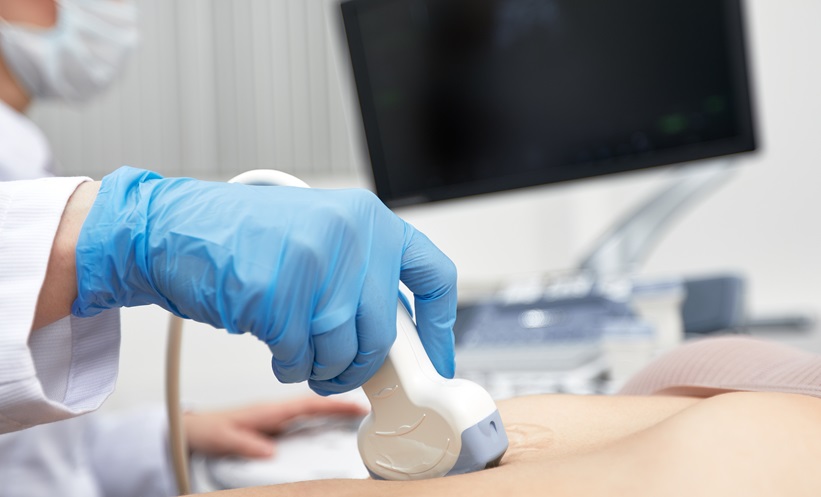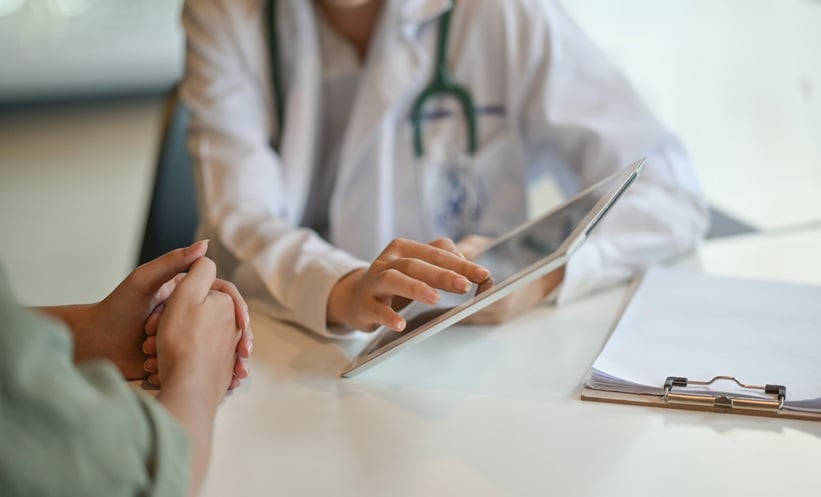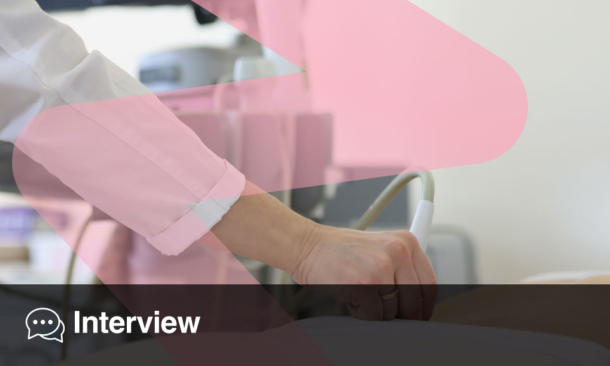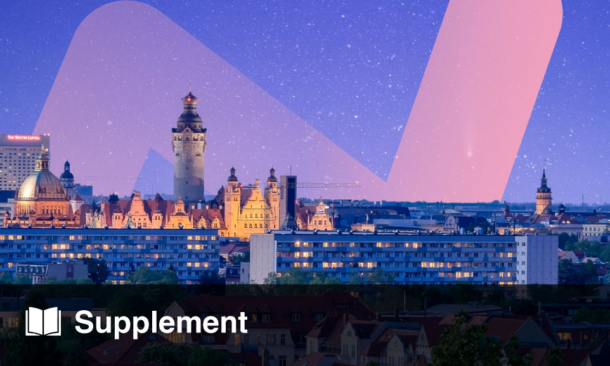Aleksander Krag | Secretary General, European Association for the Study of the Liver (EASL); Professor of Hepatology, University of Southern Denmark; Department Chair, Department of Gastroenterology and Hepatology, Odense University Hospital, Denmark.
Citation: EMJ Hepatol. 2025;13[1]:55-61.. https://doi.org/10.33590/emjhepatol/RHGZ8336
Disclosure: Krag has served as a speaker for Novo Nordisk, Norgine; participated in advisory boards for Boehringer Ingelheim, GSK and Novo Nordisk, all outside the submitted work; received research support from AstraZeneca, Siemens, Nordic Bioscience, GSK, Echosense; and is a board member and co-founder of Evido.
![]()
You’ve now spent 2 years as Secretary General, having first joined the European Association for the Study of the Liver (EASL) Governing Board as Vice-Secretary. How has your vision for EASL evolved over this time, and what specific initiatives have you focused on building or transforming this year?
What we set out to do, and what we’ve continued working on, is exploring all the ways we could create the best possible Congress, one that appeals to everyone. Ultimately, our goal is to promote liver health and beat liver disease. That aligns with our strategic pillars: E for Education, A for Advocacy, S for Science, and L for Leadership. These are the foundations of a successful congress, summit, journal, or policy intervention.
Behind all of this is our team. We have more than 30 employees in Geneva (Switzerland) and over 200 volunteers, which makes EASL a large and dynamic organisation. Take our journals, for example. Each may have around 100 people involved across various committees, each with different goals and responsibilities.
When we set out to improve our congresses, we started by asking ourselves: ‘What do we want EASL to look like?’ and then, ‘How do we make that happen?’ That meant revisiting why EASL exists, and importantly, it’s not because of me. EASL exists because of the patients.
Once you’ve identified the people who care about liver disease, the next step is helping them. You have to design a program that draws them in. Not just through scientific sessions, but also through educational content, advocacy efforts, industry presence, and exhibitions, because that’s what leads to new drugs and interventions for patients who might otherwise have no options.
This begs the question: how do you make it appealing? We had nearly 8,000 participants this year, with a complete gender balance and a wide age distribution, from people in their 20s to others in their 80s. That tells us we’re reaching different generations, and each one has different needs. Someone who’s been a professor for 30 years has a different want to a clinician in training. It’s necessary to understand this matrix and offer something for everyone: highly specialised content, general overviews, and hands-on sessions.
We’ve included skills-based learning sessions, such as how to do endoscopy, ultrasonography, and elastography, involving hands-on training. We also have ‘Meet the Expert’ sessions, where you can sit down with someone, maybe even someone like me, and ask, ‘How does Aleksander Krag approach this?’ It’s very close to clinical research. Then there are the ‘Do’s and Don’ts’ sessions, on how to apply what you’ve learned.
We have symposia that give state-of-the-art overviews, designed so you go home with something that changes your practice. At the forefront, we have almost 2,000 abstracts. This is where you see the future of liver research. In parallel, we run purely educational programs, like the postgraduate course.
Our focus has been on bringing all these elements together. You need a clear vision. How do we become the centre of the liver universe? How do we allocate resources, not just today or tomorrow, but to shape what we want to see in five years? That’s why, even before the official start of the meeting, we held a session on clinical endpoints. You can’t run a trial or develop a drug if you don’t know what you’re measuring. It was about reaching a consensus on endpoints in areas like primary biliary cholangitis and intermediary hepatocellular carcinoma. This wide portfolio reflects our broader ambitions.
Inclusivity is absolutely essential. Just look at the diversity of participants. There are not only physicians, but many allied health professionals, nurses, patient organisations, and representatives from several industries. Moreover, these industries are not just pharma, but also imaging, basic science, biomarker development, and more. We don’t have an exact count, but there were likely over 1,000 side meetings: small, focused discussions. I had one myself this afternoon, just a quick 30-minute conversation. That’s part of the value here.
You’ll also see journal editors from outside EASL attending because they recognise this as the place to be. I had brief discussions with several of them. They want to know what’s next. This is the kind of ecosystem we want to build: a marketplace.
This isn’t a traditional congress, and it shouldn’t be. It’s a marketplace where everyone, regardless of background or focus, can find their place, connect, share ideas, and contribute. EASL provides the platform, the space, and the coordination to make it all happen. It has been a big undertaking, but it’s incredibly rewarding to see it all come together.
At last year’s Congress, you stressed the urgency of tackling non-communicable diseases and the need for better policy engagement. What real-world policy changes or partnerships have EASL helped influence since then, and what’s next on the policy front?
What we launched at this Congress, during the opening ceremony, was the European Health Alliance on Alcohol. We’ve been working on that for almost a year. It’s a partnership between EASL and WHO Europe, and it represents a very strong connection.
We have many strong public health experts involved, and from our side, we bring the scientific perspective. More than 20 organisations are a part of the alliance. The goal is to bring evidence and turn it into action. How do we translate science into something a politician can understand and use? How can we better protect populations through policy? That’s a very concrete initiative.
Another initiative we began is a global public health and policy alliance. It’s not only about Europe; although we are based here, we care about the rest of the world too. EASL’s reach goes far beyond Europe, and you can see that here at the Congress, with participants coming from 119 countries. In fact, our guidelines are used in over 180 countries. With that kind of global influence comes great responsibility.
These are very important, concrete actions. Additionally, coming up next is the World Health Assembly at the end of May. We will be holding a side meeting there, with a focus on getting non-communicable diseases onto the agenda. That’s especially important with the upcoming United Nations (UN) meeting in New York, USA, this September. The UN sits above the WHO and defines what counts as a non-communicable disease, and the problem for us is that liver disease is still not formally recognised as a non-communicable disease.
That’s an issue because if you want to influence policy, the disease needs a name. It needs recognition. We’re pushing for liver disease, including conditions like metabolic dysfunction–associated steatotic liver disease, metabolic dysfunction-associated steatohepatitis, and alcohol-related liver disease, to be acknowledged as part of that spectrum. If liver disease remains excluded, it doesn’t appear on the radar for governments or funders. We’re working hard to get it on the agenda in time for the meeting in September. These meetings only happen every 4 years, so you don’t get many chances to influence that kind of definition.
This is the kind of long-term work we do that takes years to come to fruition. Some of what we’re starting now won’t fully unfold for another five years. That sits alongside very immediate, hands-on work too, like our skills learning labs that directly benefit patients and clinicians.
There’s a lot more happening as well. We have an entire policy track, including how we engage with the European Parliament and activities around World Liver Day. There are many ongoing efforts. The same goes for education: we have EASL Schools, masterclasses, and we’re now working on implementing a core hepatology curriculum across Europe.
In addition to this Congress, on the scientific side, we host summits like the Liver Cancer Summit and the Steatotic Liver Disease (SLD) Summit. EASL doesn’t just go quiet for most of the year before suddenly holding a Congress. It’s a year-round effort, with continuous work across policy, education, science, and advocacy.
Climate change is a topic you’ve previously written about in relation to liver disease. What role do you believe EASL should play in promoting sustainable hepatology practices, and did this theme feature at all in EASL 2025?
EASL can, and does, play a role in promoting sustainable practices. I co-authored a commentary exploring how liver disease and climate change interact, which is published in Gastroenterology and Journal of Hepatology. It was a joint publication between EASL, the American Association for the Study of Liver Diseases (AASLD), the British Society of Gastroenterology (BSG), and the British Association for the Study of the Liver (BASL).
We looked at how these things link together, and even with this meeting, considering that we have almost 8,000 people, how do we ensure that we’re not wasting resources? Fortunately, we’ve collaborated closely with the venue, and they really care about sustainability.
As an organisation, EASL doesn’t produce a huge carbon footprint directly, but bringing people from 119 countries together does. Lots of changes have been made, and EASL is embracing these ideas. For example, we used to serve food for everyone, but most of it ended up being thrown away. We didn’t want to be a part of that anymore, so now that has changed. We also encourage people to travel more sustainably. On social media this year, we said: “If you can avoid flying, please do. Come by train, or even by bike if you can.”
There are also more direct links between liver disease and global warming. Some are very clear, while others are indirect. However, in the environment we live in, things like pollution and obesity are clearly connected. There is a growing understanding of how urban planning, lifestyle, and liver health are intertwined. We’ve written about this already, but it will also come up in the upcoming EASL–Lancet Commission. These are the kinds of topics we need to highlight. Politicians can’t make informed decisions without evidence, so we’re trying to provide that direction.
Take cities, for example. This city, like my own, is a relatively healthy city, though still slightly polluted. It works because people can bike everywhere, but in many places, that’s just not possible.
Then there’s the issue of food access. We have what are called food deserts: large, often deprived areas where people simply can’t buy healthy food. That’s very common in the UK, actually. Then there are food swamps, where all you can get is ultra-processed food. We know this food is directly linked to liver diseases. Moreover, when you add very liberal alcohol laws into the equation, it becomes clear how the environment people live in contributes significantly to liver disease.
We’re also doing work on migrant health. Climate change is pushing large groups of people out of their homes. Sooner or later, there may be parts of Africa that are no longer liveable. Where will those people go? How do we support them? We’ve already developed a major guideline and policy paper on how to manage and support these underserved groups. At the end of the day, as an influential organisation, we are accountable. Not just in what we say, but also in what we do and what we enable.
There’s no doubt that climate change is a driver of liver disease. As the environment shifts, we see more challenges from both infectious diseases like viral hepatitis and non-communicable diseases like alcohol-related liver disease, steatotic liver disease, and obesity. It all reinforces the need for a stronger response to these diseases.
In your view, what recent developments in personalised hepatology, from ‘omics’ to AI, are closest to making a real difference in everyday clinical decision-making?
At EASL, we have a task force specifically dedicated to looking into AI and advising us. They’re coming out with a position paper in the Journal of Hepatology very soon. I can’t disclose the details yet, but speaking now as a researcher, and acknowledging that I have some conflicts of interest, it’s clear that we can’t do the kind of research we do today without AI. You can hardly publish anything anymore without using the lighter ends of AI, such as machine learning, which can analyse the massive amounts of data we have.
Then there are other layers beyond the analytical. For instance, AI is already being used in pathology. You take slides, images of tissues, and analyse them. In my country, all pathology has been digitalised. The physical slides are almost obsolete; it’s all digitised. That’s the reality today, and it’s an area where AI has been strong for quite a while, just like in radiology. It allows for very rapid, precise analysis. If I have a liver biopsy slide, how do I see the amount of scarring that is present? That’s something AI can already do, and it’s even being commercialised.
I was also one of the co-founders of a small company called Evido, which uses advanced algorithms to help detect liver disease early. Some of the tools we use now, like the Fibrosis-4 (FIB-4) index, are not very useful; they were developed 20 years ago for different purposes. If you have very large datasets, like we did, and you want to assess the risk of liver disease at a simple, affordable level, you can integrate all that knowledge. That’s difficult for a human brain, but a computer can do it. This system was built from around 200 different algorithms. It uses whatever data is available, even if some is missing, and gives you a stronger estimate of your liver disease risk.
These are what I would call ‘first-generation’ AI tools. They represent a huge leap from the simple tests we used to scribble out on the back of an envelope. These diagnostic or prognostic tools, which can sort patients into different risk categories for the future, are already being used.
I also work a lot with omics, which produce huge volumes of data that are hard to manage. However, AI gives us a way to process and make sense of the data. The challenge is, even if the tool works well, there’s still a long way to go before it reaches the market. The company I mentioned already got a Conformité Européenne (CE) mark, so that tool can now be deployed, but I do a lot of work with biomarkers too, and the problem there is that the CE mark process can take five years in hepatology.
Pro-C3 from Nordic Bioscience (Herlev, Denmark) recently received the CE mark, which they announced the other day. It took them 10 years. Otherwise, we have the Enhanced Liver Fibrosis (ELF) test from Siemens (Erlangen, Germany), and the FibroScan® from Echosens (Paris, France). These are the tools that have been fully approved. Meanwhile, there are thousands of papers on biomarkers out there. That’s the barrier we face when trying to translate brilliant science into something usable for patients.
Commercialisation is necessary. Someone has to take the next step. We want to carry out our research and publish papers, but someone has to take those findings and turn them into real tools. It’s a real challenge: how do we pick up and carry forward the most promising ideas?
I still believe in omics. For example, we’ve done a lot with proteomics, which is proving very powerful. The technology around mass spectrometry is getting better, faster, and cheaper. Most hospitals today have a mass spectrometer. If we have the knowledge and can link it to meaningful treatment decisions, I don’t see why we shouldn’t implement it. If a clinical decision can have huge consequences or comes with major costs, then the decision-making tool can afford to be more expensive.
The regulatory pathway is definitely a barrier. For traditional biomarkers, the pathway is more or less clear, but for AI-driven tools, especially the more dynamic, self-learning models, it’s a different story. People need to know what, exactly, they are approving. If a model changes over time and keeps learning, that’s a problem. The current systems aren’t set up for that. Therefore, unfortunately, some of the most advanced forms of AI, the ones that could help us the most, can’t be approved yet.
Still, AI tools can and should be applied as close to the patient as possible, ideally outside of hospitals, where care is cheaper. The whole idea is to create a broad screening tool, which is where our current tools fall short. Take FIB-4 again. If you’re trying to use it filter out people who don’t have liver disease, it fails about half the time. That’s a big problem.
As co-chair of this year’s ‘Navigating Clinical Practice and New Therapies in Steatotic Liver Disease’ session, what were some of the most promising solutions, or challenges, brought to light?
I think there’s a lot of enthusiasm, but it’s still early. We have two drugs that made it through Phase III: one is already approved, and the other has met its primary endpoint, so it will receive conditional approval. They’ll be on the market very soon, so we’ll finally have something to offer these patients. There’s a huge pipeline, and many other positive Phase II studies are now entering Phase III. This will be a real game changer.
The challenge is translating this into the real-world and actually getting these treatments to all the patients who need them. How do we make that happen? That’s the conversation we’ve been having, and it comes down to case finding. How do you identify people who don’t necessarily want to go to a doctor, especially for a disease they don’t know or can’t feel they have, but which could ultimately kill them? How do you build a healthcare system that can proactively find and support these patients? That brings us back to using tools like FIB-4. We know it’s not perfect, but how do we make it work in practice? That still isn’t entirely clear.
The most important thing that could accelerate all of this is an effective surrogate biomarker. Right now, all the studies rely on liver biopsies. It’s a very tedious and expensive process, which means you need a lot of resources just to give a new therapy a try.
Imagine if you could run a shorter trial, like with hypertension, where you can simply measure blood pressure, or in diabetes, where you check HbA1c, or in hepatitis C, where you measure sustained virologic response. In these areas, there are established endpoints, and that makes it much easier to run trials. We don’t have that for liver disease at the moment, but imagine if we had a biomarker that could be measured, indexed, and then checked again 6 months later. You wouldn’t be so hesitant to try new drugs. That could make a huge difference. The issue is in creating awareness and finding a healthcare system that’s ready.
At this event, I think we’ve screened close to 2,000 people in just the past few days. That tells you something. People don’t go to their GP or somewhere else to get checked. That’s why we do things like the Love Your Liver project, so we can raise awareness in the community. It’s important to teach people what the liver is, how it works, and why it matters.
We’ve also been to 13 different schools in the area. Some of the kids didn’t know what the liver is, or whether you can live without one. It’s very basic stuff, but that’s what liver health awareness is about: starting from the ground up.
You’ve long been a champion of education and supporting young hepatologists. What new opportunities, programmes, or mentorship initiatives did EASL introduce this year to help shape the next generation of leaders in liver research and care?
We’re very proud of the EASL schools, which is where we invite around 30 people to a certain centre and try to give them 3 days of the best education and the best networking in the field. We also have a master class that we usually do with the American Association for the Study of Liver Diseases (AASLD) this year, bringing the community together once again.
We have launched many different initiatives. We have an initiative around guideline implementation, and we have an initiative focused on building a core curriculum, on defining what hepatology is and what the minimum standard should be to drive hepatology forward.
Another part of that portfolio is our guideline app. We just made a new one, and it is slowly moving towards a more AI-driven model. We want to have the best guidelines in the world, a closed environment, and tools that allow you to say, “I have patient, this is the problem they’re having, and here are their lab results. What should I do? What do EASL guidelines suggest?” Instead of just having PDFs, we want to make guidelines more interactive and easily accessible. These guidelines need to be in everyone’s pockets, so having them on mobile devices is key, but that’s a long-term process.
We also launched what we call EASL Deep Dives, which are fancy versions of webinars. In addition to that, we have the whole studio portfolio, which is very popular. On our educational webpage, we have more than 30,000 documents. Last year, we had over 326,000 page views from 180 countries. One of the most visited pages is actually EASL studio. Many people like to listen to experts discussing topics while they’re biking, driving, or doing other things.
Finally, what was your favourite moment or session from EASL 2025, either one you chaired or attended, and why did it resonate with you?
It was a bit emotional for me because it’s my last congress as Secretary General, and it’s been a very intense thing to do alongside my research and clinical duties. I’m very proud of the Opening Ceremony. I think we managed to capture something important and had a great discussion about putting alcohol on the agenda. For a long time, there has been an imbalance between the burden alcohol causes and the attention it gets. Alcohol is, without comparison, the leading cause of liver disease in countries like the UK and Denmark, accounting for approximately 70% of cases. Nevertheless, we were finally able to shine a spotlight on alcohol, form the Alcohol Health Alliance, hold this session, and have a studio with WHO. If I had to pick one thing, something that I was personally involved in, it would be that.
I also felt privileged in my position when giving awards to people who have made a real difference. Seeing people who have made those differences, and how happy they are to have been acknowledged, is really special. That is the moment when it becomes an international, inclusive family. Everybody’s welcome. EASL really is the home of hepatology, and everyone inside it is like a family.








